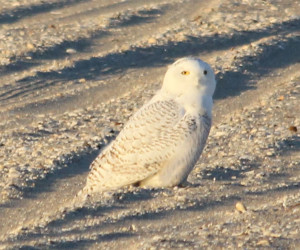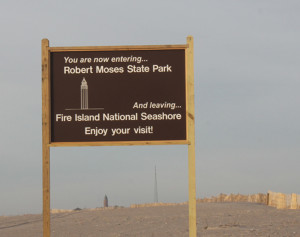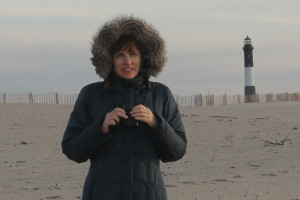A Snowy Owl in Bohemia
A SNOWY OWL IN BOHEMIA – (That’s Bohemia, New York, by the way).
Diane Haberstroh writes from Bohemia, Long Island, New York. December 2013.
Diane loves long walks looking at birds, animals and trees.
She’s never seen a Snowy Owl and hears some have been seen not far from Bohemia, Long Island?
Diane goes looking . . . and discovers that at nearby Kennedy Airport, these beautiful birds are being shot and killed!
Diane writes:
There has been a lot happening on this side of the Atlantic since last I wrote, some of which being the government shutdown, Obamacare,
and a train wreck of the literal variety, to name just a few.
But I prefer not to report on such dismal events.
Instead I would rather tell you about a news item that flew into our world, caused some controversy, but had a happy ending.
LONG ISLAND BEACHES
It began a couple of months ago, when birders first reported seeing an unusually high number snowy owls on our Long Island beaches.
Though it is typical to find a few on our local beaches in the winter, it is believed that larger than usual numbers
of the owl are migrating down to our area because there is a food shortage in their more northern winter habitat.
Of course more owls can be a bad thing for many other smaller creatures, but it is giving us more of an opportunity to see these magnificent birds.
FIRE ISLAND
Never having seen one, but very much desiring to do so, I cleaned the lenses of my binoculars and set my sights
on adding “snowy owl” to my birding life list. I began my quest by scouring the online birding sites to see where they were being spotted.
All the snowies being reported were seen on the beaches of the Hamptons, Fire Island, and Jones Beach.
The Long Island south shore beaches with their treeless, windy, and secluded environment probably reminds the owls of the Tundra from which they originate.
I began my search at the beach closest to me, which is Fire Island.
It was an early Sunday morning when I walked down to the beach from the parking lot.
I met a fisherman who was wearing waders and carrying a bucket and reel for surf casting. In a brief conversation with him, I mentioned that I was there bcause I heard about the snowy owls.
“Yeah, I saw one last week,” he casually mentioned. “I didn’t know what it was. Someone told me it was a snowy owl.”
He indicated where he had seen it, pointing to a concession stand that was now closed for the winter and the area around it desolate.
“It was just sitting on a fence over there.” I was grateful for the tip, wished him luck, and hurried off to the section he had pointed to,
but after walking around the area several times scanning the beach with my binoculars I saw nothing.
I walked to another area when I heard crows sounding their warning caw. Perhaps they were seeing the owl, I thought.
I eventually gave up and searched the online bird bulletin boards looking for more leads.
KENNEDY AIRPORT
I returned to the same Fire Island Beach on Monday morning, searching again before I had to go to work.
While I was making my way back to the car, I met a man who told me he walks there every morning.
He informed that he had not seen any snowy owls, but more shockingly he had read in the Daily News the day before that the Port Authority
is shooting snowy owls by Kennedy airport, because they claim they are dangerous to planes.
I was very alarmed by this news, but thought he was probably mistaking snowy owls for Canada geese for some reason, which have always been a problem for the airports.
When I got home that morning, I searched the internet for the Daily News article and unfortunately,
it was true that the Port Authority of New York had added snowy owls to its kill list, and they had already shot three of them.
MIRACLE ON THE HUDSON
In order to protect planes during takeoff at Kennedy Airport, the Port Authority controls the bird population around the airport.
They do this to decrease the chances of bird strikes, which could damage or shut down a plane engine.
This happened in 2009 when a U S Airways plane during take-off was struck by a flock of six Canada Geese,
causing engine failure and the pilot being forced to land the plane on the Hudson River.
It was later known as the Miracle on the Hudson because all 155 passengers and crew members survived.
The birds on the Port Authority kill list are: Canada Geese, mute swans, red-winged blackbirds, European starlings, crows, pigeons and double-crested cormorants.
The snowy owls were the latest to be added to the list when one sitting on a runway sign (the newspaper article reported it was nesting on a sign,
but this was probably not the case) was sucked into an engine.
No one was injured, and I’m not sure, since nothing was reported about it, if the plane had any significant damage, but I think I can safely assume that the bird was killed.
After that, the Port Authority added snowy owls to their kill list and killed three of them in one day.
HUMANE SOLUTION
Birders were outraged over the news.
Many asked why since there were so few owls, unlike the other birds on the kill list that are numerous, the Port Authority couldn’t just trap snowy owls
and release to another area. Also, Snowy Owls do not fly in flocks, like the others (although I’m not sure about the double-crested cormorants), so a strike would probably not be as dangerous.
Bird Strikes are also a problem for many other airports such as Logan Airport in Boston.
However, their policy has been to trap the snowy owls and release them elsewhere.
Many New Yorkers questioned why if Boston could have a humane solution to the problem, why New York couldn’t have one too?
Online petitions were signed by thousands of New Yorkers demanding that the Port Authority change their policy.
The next day after the New York newspapers ran the snowy owl story, the Port Authority released a statement saying that they changed their policy.
They would now work with the Department of Environmental Conservation in trapping and relocating any snowy owls discovered in the airport vicinity.
This was a great victory for the owls and those who appreciate them.
VICTORY
As for me, I also had a victory of sorts.
I went back later in the week to the same Fire Island Beach, where I first looked for the snowy owls.
This time I was only walking a few minutes when in the distance I spotted what I thought could be a snowy owl.
I tried not to get too excited, thinking I might be seeing just an odd seagull,
but when I looked through my camera viewfinder I knew indeed I was seeing a female snowy.
It was a magnificent creature just quietly sitting in the sand. It turned its head to look towards me,
and then I could see her intense yellow eyes.
Although I was probably at least 50 feet away from her, she did not like my presence and flew away.
I was happy and a little stunned to have finally seen a snowy owl, and to now be able to add it to my birding life list.
My quest was over, and furthermore, the owls were assured of a safe haven for the winter.
DAILY NEWS ARTICLE
Here’s a link to an article about the owl controversy, if you care to read it.
http://m.nydailynews.com/1.1541823#bmb=1
Leave a Response
You must be logged in to post a comment.




